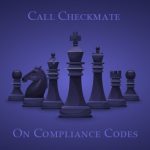8 Steps (plus a bonus) to Clean Data
Step 1- Evaluate the Issue
Determine the problems before you can fix it. Check your database to see how much data is incomplete and how many variants are in your system.
Step 2- Clean what you have
Existing records should be cleaned up before adding new controls, filters or tables/templates into place. If you find you are missing a lot of data, consider using a data connector that consolidates data from different sources so that the blank values can be filled in. If the same data keeps getting recorded in different variations (duplicates) consider normalizing the data. This process will convert multiple variations into a single version that avoids you sending out information to the same prospect who may be listed in different places but is essentially the same person.
Step 3 – Do not Delete until You’ve Conferred
Someone, usually a salesperson, went through a lot of effort to get the information you have in your database. If possible, consult with them before deleting any bad records.
Step 4- Merge before Deletion
If you’ve asked current salespeople about their list, but it is still unclear if the data is reliable or not, consider merging before deleting. Especially if the salesperson is gone and no longer able to inquire from, don’t delete the information just because that point of contact is lost. Merge your data before entirely deleting it. This will avoid you losing potential valuable prospects entirely should new data be found or the prospect returns.
Step 5 – If possible, use Field forms
Field forms, also known as Picklists, offer a list of pre-determined values. This type of list is great for categorizing people’s job titles, geographic area, demographics, income and more. By using a picklist, the salesperson has a smaller chance of entering errors because they are checking off boxes instead of filling in information freely.
Step 6- Make sure all your fields are normalized
A lot of duplication happens when the fields are different. Simple things like normalizing titles and addresses makes a huge difference in your data base. Do you have Mr. or Mister, Mrs. or Ms. or Miss? Do you use USA or United States or America? Do you use rd. or road, Avenue or Ave?
It sounds silly, but if different people use different variants, you could have a Miss Jones of 123 Avenue U.S.A. alongside a Ms. Jones of One Two Three Ave. United States, and they are both the same person getting two pieces of mail from your mailer. This can get costly.
Step 7 – Progressive Profiling
If your data recognizes past prospects when you pull it up, you’ll only need to ask them for additional data. This eliminates the need to re-enter data already in the system. It will help avoid the number of duplicate entries as well as fill in any gaps the last person wasn’t able to retrieve. This will also give a more personalized experience to the prospect as they’ll see you saved their information from before.
Step 8- Limit who can make changes to the CRM.
The best way to keep your database clean is to limit visibility to the settings on your CRM or marketing automation platform. Keep the user visibility settings up to date while minimizing the risk of duplicate entries as staff can change frequently and who can make these changes should be reviewed on a regular basis.
(Bonus Step)- Empower and motivate your staff to get on board.
Having a good database is important to everyone, so everyone should realize that the effort to keep it clean is a group effort. Make sure every user understands how bad data can impact not only sales, but their overall performance and ultimately, their paycheck.







